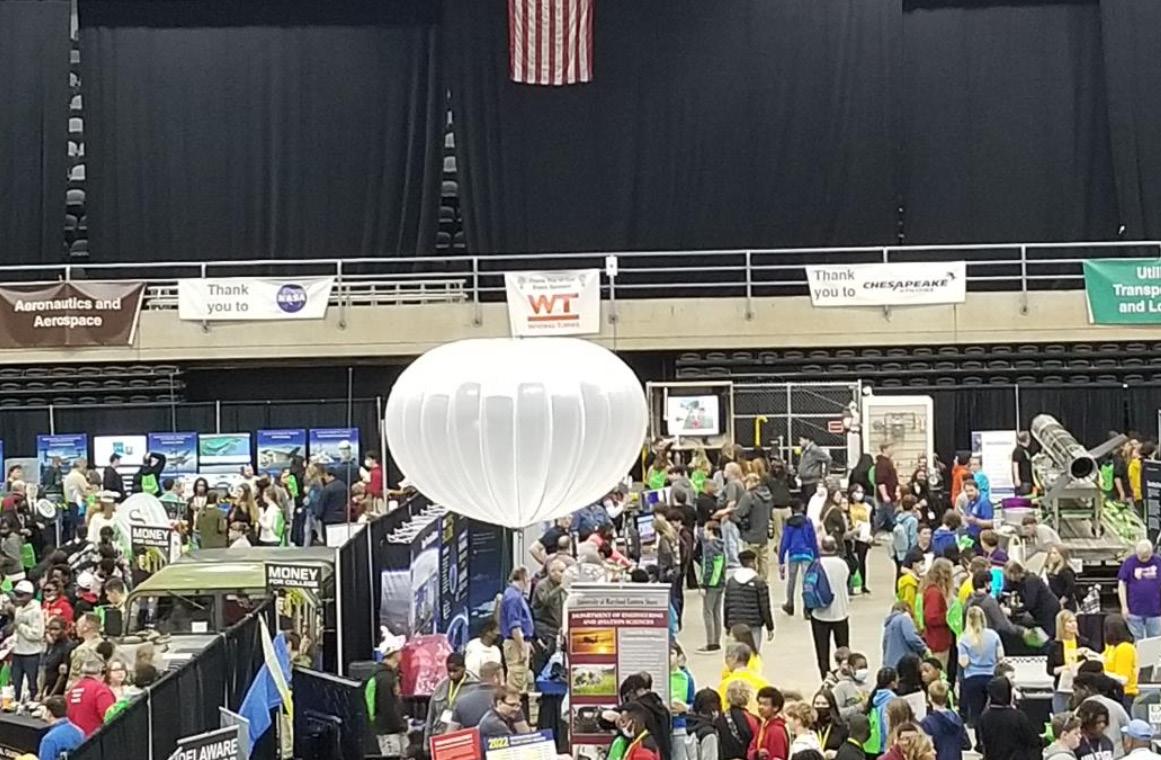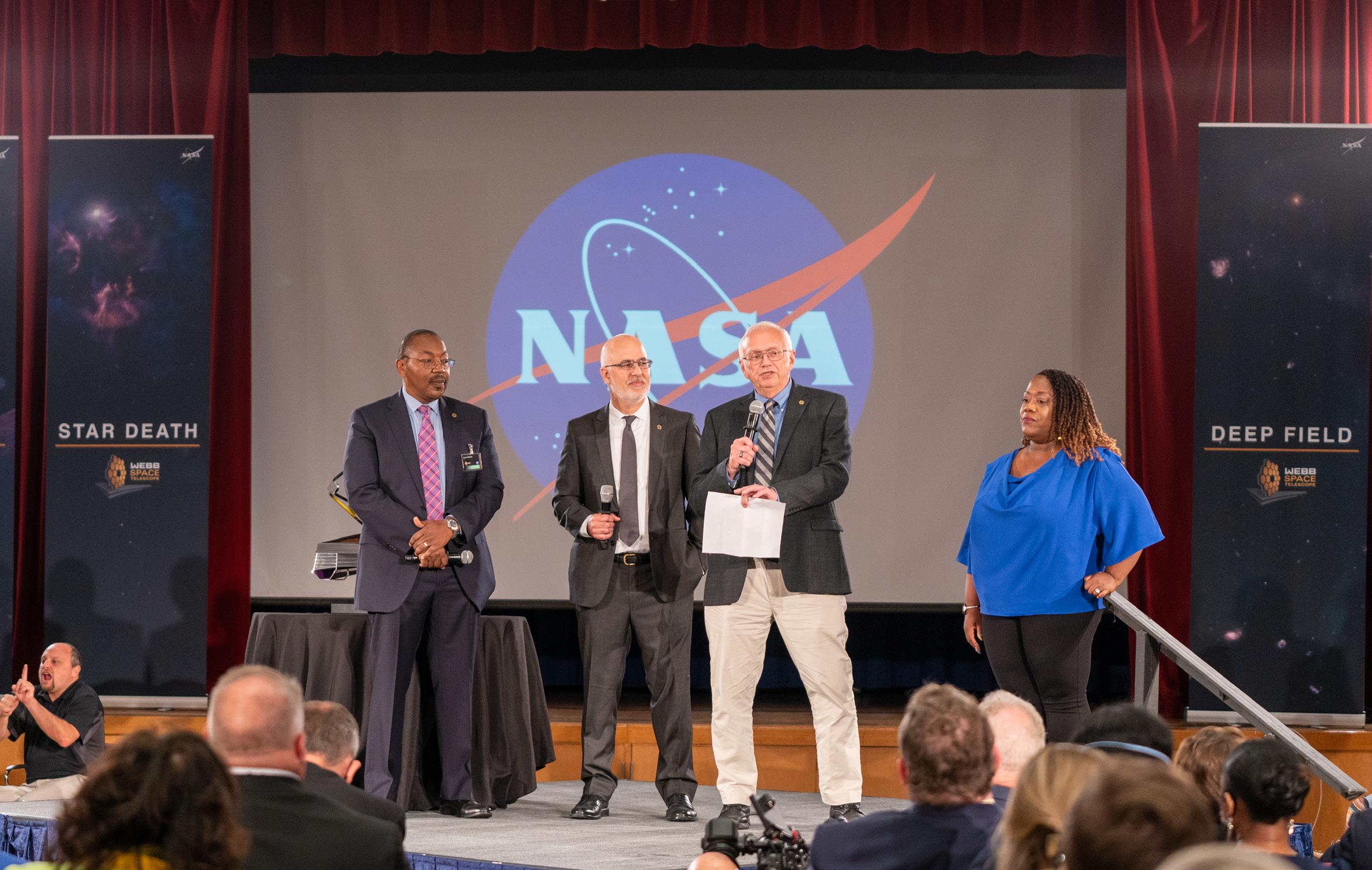
5 minute read
HIGHLIGHTS OF 2022



WEBB ASTROPHYSICS
Expected to be the next great space observatory over the next decade, the James Webb Space Telescope launched from the European Space Agency’s Spaceport in French Guiana in December 2021. Science operations began months after a successful Goddard-led commissioning process, leading to the release of the first five images in July 2022. Webb was designed to solve mysteries in the solar system, looking beyond to distant worlds around other stars and probing the mysterious structures and origins of the universe and humanity’s place in it.
LCRD COMMUNICATIONS AND NAVIGATION
Launched in December 2021, the Laser Communications Relay Demonstration (LCRD) continues Goddard’s long-standing role in space communications, demonstrating the agency’s first two-way laser communications relay system by sending and receiving data over infrared lasers. The technology enables data rates 10 to 100 times greater than traditionally used radio frequency systems. This year, LCRD began its experiment program, testing the capabilities of laser communications through experiments with academia, industry, and other NASA missions.
LANDSAT 9 EARTH SCIENCE
The Landsat program marked its 50th anniversary in July 2022, celebrating five decades of a partnership between NASA and the U.S. Geological Survey that has provided a continuous record of Earth’s land surfaces and helped scientists and policymakers monitor, understand, and manage the land resources needed to sustain life. The latest iteration of the program, Landsat 9, launched in September 2021, and first images were released a month later. It works closely with its predecessor, Landsat 8, to collect data on our changing planet.
PARKER SOLAR PROBE HELIOPHYSICS
Parker Solar Probe has traveled through the Sun’s atmosphere – closer to the surface than any spacecraft before – sampling particles and magnetic fields while providing humanity with the closest-ever observations of our nearest star. During a recent flyby of Venus – whose gravity helps bring the spacecraft closer to the Sun – in July 2020, Parker took the first visible light images of the planet’s surface from space, helping advance research of Earth’s neighbor by revealing the presence of such features as continental regions, plains, and plateaus. Results were published in February 2022.




LUCY PLANETARY SCIENCE
NASA’s Lucy mission launched en route to the Trojan asteroids in October 2021 from Cape Canaveral Space Force Station in Florida. Named after the fossilized skeleton of a prehuman ancestor, Lucy will fly by one main belt asteroid and seven Trojan asteroids during its 12-year primary mission, potentially revolutionizing humanity’s knowledge of planetary origins and the formation of the solar system. The mission completed the first of three Earth gravity assists in October 2022. It is scheduled to arrive at the first asteroid target in 2025.
NAFTU TECHNOLOGY
The NASA Autonomous Flight Termination Unit (NAFTU) is a command and control system helping to ensure public safety during launch operations at all U.S. launch ranges. Wallops Flight Facility – in collaboration with NASA Headquarters, U.S. Air Force, U.S. Space Force, and Federal Aviation Administration – began development of NAFTU in 2020 when it became fully funded, designing it to be customizable and support a wide array of launch vehicles at any range.
HUBBLE ASTROPHYSICS
The Hubble Space Telescope officially passed the 1-billion-second mark of operations on Jan. 1, 2022. Now entering its 33rd year of operations, Hubble has revolutionized humanity’s understanding of the universe through countless discoveries and memorable images, taking more than 1.5 million observations since its launch in 1990. It is NASA’s most productive science mission to date. With the launch and commissioning of the James Webb Space Telescope completed, NASA expects both observatories to work together well into the 2020s.
TBIRD COMMUNICATIONS AND NAVIGATION
The TeraByte InfraRed Delivery (TBIRD) system, carried aboard NASA’s Pathfinder Technology Demonstrator 3 mission as part of a SpaceX rideshare launch in May 2022, will showcase the high-data-rate capabilities of laser communications from a CubeSat in low-Earth orbit. At 200 gigabits per second, TBIRD will download data at the highest optical rate ever achieved by NASA. Laser communications will help the agency develop more efficient communications systems necessary to explore the Moon and Mars and help collect data from enhanced scientific instruments aboard spacecraft.




OSAM-1 TECHNOLOGY
NASA’s On-Orbit Servicing, Assembly, and Manufacturing (OSAM-1) – a mission that will be the first to robotically refuel a satellite not designed to be serviced and that will demonstrate assembly and manufacturing technologies and capabilities in space – passed its mission critical design review in March 2022. The milestone paves the way for the construction of the OSAM-1 spacecraft, payloads, and ground system by NASA and its partner Maxar Technologies in preparation for a launch no earlier than 2026.
ILLUMA-T COMMUNICATIONS AND NAVIGATION
NASA’s new laser communications terminal, ILLUMA-T, arrived at Goddard from the Massachusetts Institute of Technology’s Lincoln Laboratory to undergo final assembly and testing to ensure it can withstand the rigors of a rocket launch and the extreme environment of space. Once it is installed aboard the International Space Station, the terminal will use laser communications to relay data to and from Earth via NASA’s Laser Communications Relay Demonstration. ILLUMA-T could allow astronauts and experiments aboard the orbiting laboratory to send and receive substantially more data, including pictures and video.
ROCKET LAB SUBORBITAL
Wallops Flight Facility was selected by launch and space systems company Rocket Lab as the home for its new Neutron rocket’s first launch pad and production facility, further supporting the growth of commercial space capabilities in Virginia. Rocket Lab broke ground on the Neutron Production Complex – which will include a rocket production, assembly, and integration facility – in April 2022. The company has targeted the first Neutron medium-class orbital rocket launch for no earlier than 2024.
DAVINCI PLANETARY SCIENCE
NASA’s Deep Atmosphere Venus Investigation of Noble-gases, Chemistry, and Imaging mission (DAVINCI) will descend through the layered Venus atmosphere to the surface of the planet in mid-2031, becoming the first U.S. space probe to do so in more than 40 years. DAVINCI will study Venus from above its clouds down to its surface, investigating how the planet and its massive atmosphere formed and evolved over the past 4.5 billion years. NASA revealed new details about DAVINCI in June 2022, detailing instruments that will study the planet’s cloud and highland areas and how it will make use of Venus’ gravity assists.










